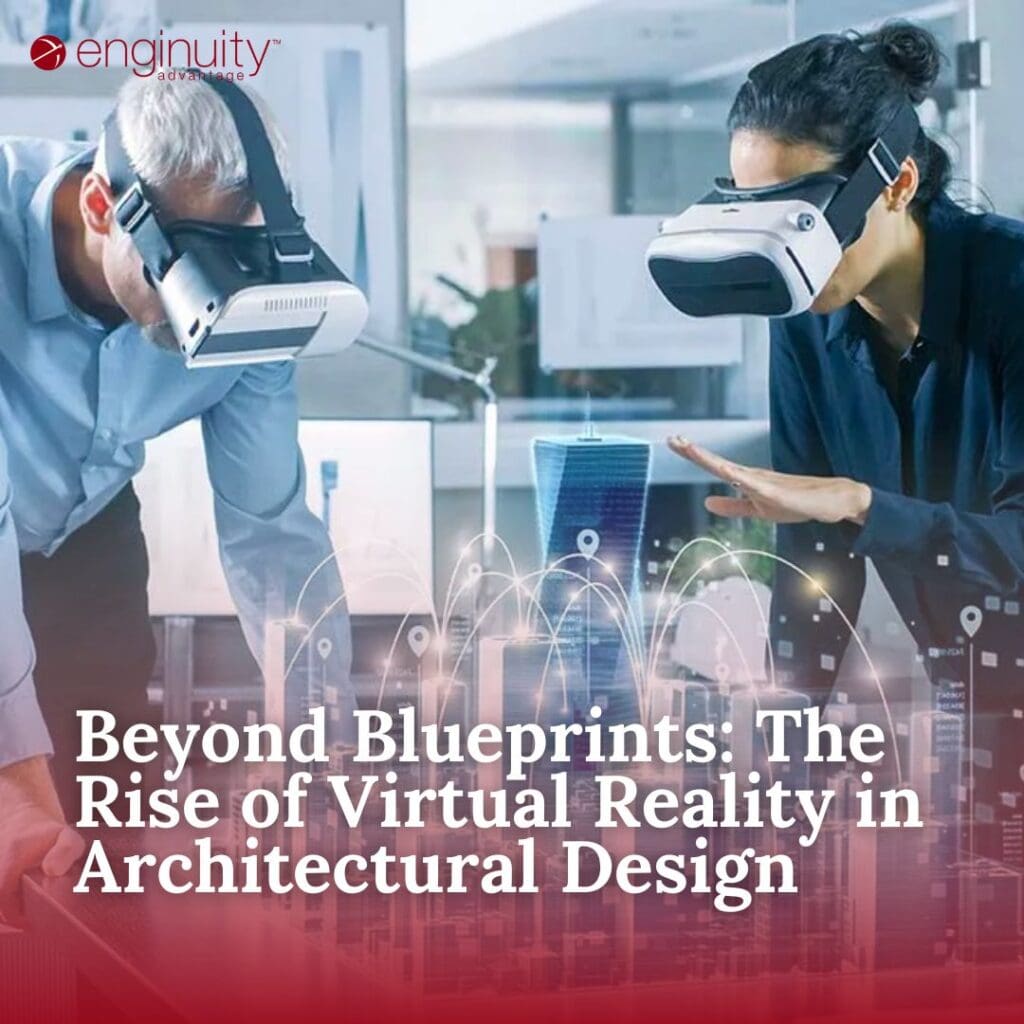Beyond Blueprints: The Rise of Virtual Reality in Architectural Design

In the realm of architectural design, the days of solely relying on blueprints and 2D sketches are becoming a thing of the past. Enter Virtual Reality (VR) – a game-changing technology that’s revolutionizing how architects envision, design, and present their creations. With nearly 70% of industry professionals either using or planning to use VR/AR/MR in production as of 2017, and 77% experimenting with VR architectural technology, the shift towards immersive design is evident. Let’s dive into the immersive world of VR and its transformative impact on the architectural domain.
The VR Revolution in Architecture
Virtual Reality, with its ability to create immersive 3D environments, offers architects a tool that goes beyond traditional design methods. This technology, which creates computer-generated simulations of 3D environments, has evolved from its inception in the late 1960s to a pivotal tool in modern architectural design. It just recently has become advanced and flexible enough for widespread architectural application. The introduction of head-mounted displays (HMDs) like Oculus Rift, Samsung Gear VR, HTC Vive, Microsoft HoloLens, and Google Cardboard has made VR more accessible and affordable. No longer confined to flat sketches, architects can now step inside their designs, experiencing spaces in real-time and making adjustments on the fly.
Enhanced Client Presentations
Clear communication between architects and clients is pivotal during the design process. While traditional 2D drawings capture essential technical details, they often fall short in conveying the human experience of architecture. This is where 3D visualization steps in, offering a more comprehensive view of designs. Imagine walking your clients through their future home or office space before a single brick is laid.
With VR, this is not just possible; it’s becoming the norm. Clients can experience spaces, feel the dimensions, and even suggest changes, ensuring they get exactly what they envision. By using AR, architects can present their data and designs in a more engaging and realistic way, which can elicit more accurate and constructive responses from their clients. AR can also help architects collect and analyze feedback from their clients by using sensors, cameras, and voice recognition to capture their reactions, emotions, and preferences. For example, AR can measure how long a client looks at a certain element, how they move around the space, and what they say about the design.
Precision and Accuracy
Mistakes in architectural designs can be costly. VR minimizes these risks. By visualizing spaces in 3D, architects can identify potential design flaws or clashes early on, ensuring that the final construction is both aesthetically pleasing and structurally sound.
AR glasses and augmented reality tools streamline processes, enhance precision, and diminish design conflicts. They offer real-time progress tracking, eliminating the need for paper documents or hands-on site evaluations. Such innovations reduce the manpower required for site inspections and progress monitoring.
Collaborative Design Process
VR platforms are increasingly becoming collaborative. Multiple users can join a virtual space, discuss design elements, and make real-time changes. This collaborative approach streamlines the design process, fosters creativity, and ensures all stakeholders are on the same page. This bridges the gap between designers and contractors, enabling them to communicate more efficiently, leading to fewer delays caused by miscommunication.
Benefits of VR in Architecture and Design:
- Visualization: VR allows architects to visualize their projects in detail before construction, identifying potential design flaws early on.
- Cost Savings: Efficient designs using VR can lead to material savings and reduced costs. The elimination of physical mockups also saves time and money.
- Collaboration: VR fosters collaboration by allowing all stakeholders to view and discuss the design in a virtual environment.
- Client Attraction: Showcasing designs in VR can impress clients and help architects demonstrate their capabilities, leading to more business opportunities.
Challenges of VR in Architecture and Design:
- Technical Barriers: The cost and availability of VR hardware and software can be prohibitive for some.
- Skill Requirements: Setting up and creating immersive VR experiences requires specialized technical skills.
- Safety Concerns: Prolonged exposure to VR can lead to motion sickness, and there’s a risk of physical injury if users trip or fall while immersed.
- Privacy and Security: Ensuring data privacy and security within VR environments is crucial.
The Future of Architectural Design with VR
As VR technology continues to advance, its applications in architecture are bound to expand. We can anticipate more realistic simulations, integration with AI for smart design suggestions, and even augmented reality (AR) overlays that provide additional information within the virtual space.
The potential of VR in architecture is vast. Future applications may include creating interactive visualizations of cities, exploring potential designs in real-time, and simulating existing spaces for redesign. As VR technology advances, architects and designers can expect more immersive and interactive tools to enhance their design process.
Virtual Reality is not just a technological trend; it’s a paradigm shift in architectural design. For architects, embracing VR means staying ahead of the curve, delivering better designs, and offering clients an unparalleled design experience. If you’re an architectural job seeker, familiarizing yourself with VR could be your ticket to a cutting-edge career in design. Check out our latest architectural job listings.
Unlock Dream Careers & Elite Talent: Just One Click Away!


